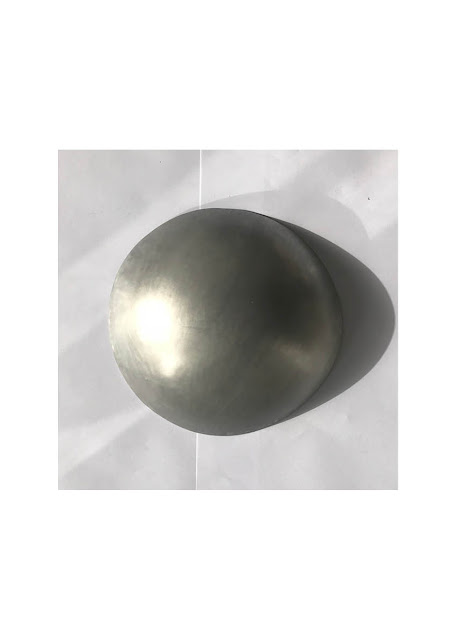_THE TRAY
The Tray
In the third tutorial we learnt the making process of transforming a 200mm x 110 sheet of metal into a rectangular tray. Working in groups of two, we needed to complete two trays which would mirror each other perfectly. Each tray would be reshaped to the same radius edges, in this case both my partner and i worked to the same male buck with a r40.
To assist in the project we used the following tools:
Etching tool
Ruler
Tin snippers
Rubber Mallet
Vice
Wooden male buck
40r radius steel dolly
Sandpaper
Metal Polish
Hand drill
Finished product
Above: Front Perspective
Above: Top Perspective
Above: Bottom Perspective
How to make your Tray
A step by step guide
The first step in this task was to measure and cut our desired 200mm x 110mm aluminium piece with matching radius corners by using the guillotine to get our initial size followed by tin snippers to perfect the corners. Next sections were marked on each aluminium sheet to indicate the areas we intended to bend.
Then we cut 2 x 190mm x 100mm male timber bucks to share between us, ensuring our trays would match at the final outcome.
Next our aluminium sheet was aligned between the two bucks ensuring that the outer edges were as even as possible. This step was important to ensure consistent width of our final edges. As a caution we used masking tape to stick the metal in place between each buck before being tightly held between the vice.
Once we double checked that the aluminium sheet was perfectly aligned we then began using the rubber mallet to begin bending the edges over the one side of the buck. It was important to pay attention to the corners as the aluminium intended to fold over each other and even into the buck. As the timber is softer than the aluminium it was hard to precisely bend the aluminium in this area. This part needed extra attention and patience.
As my edges folded a considerable amount into the timber buck i needed to remove it carefully with minimal bending and damage to the edges. To do so i screwed into the timber buck before clamping this between a vices, and slowly tapping the two materials apart with wooden stick and hammer.
Once the aluminium tray was removed i then proceeded to perfect the corners by using a steel dowel dolly (matching r40) and mallet to hammer out the corners.
Finally the tray was sanded and polished to achieve its final finish.
Above: Images of steps
Above: Images taken from varying perspectives of both trays together







Comments
Post a Comment